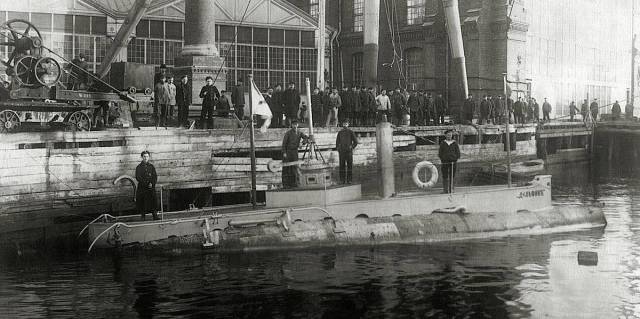On March 19, Russia celebrates the Day of the Submariner. In honor of the holiday, we tell you how the first domestic submarines were created and fought
On March 19, the Russian Submarine Fleet turns 116 years old. During this period, Russian submarines have gone through several stages of development - from tiny "hidden vessels" to the world's largest strategic missile carriers. Since their appearance in the Navy, submarines have been and remain the embodiment of the most progressive scientific and technical ideas and advanced engineering solutions.
For the first time, submarines showed themselves as a real military force in the First World War. The events of the Russian-Japanese War of 1904-1905 demonstrated that the submarines that had recently entered service were poorly adapted to the realities of armed struggle at sea.
First steps
The first of our compatriots who approached the construction of underwater equipment with a good training of a military engineer was Adjutant General Karl Andreevich Schilder. His underwater vehicle built in 1834 carried out a historic three-hour dive into the waters of the Malaya Nevka River in September 1840.
Schilder's boat was armed with missiles, and during the tests the idea of launching them from under the water found practical confirmation. There was no engine on board, the boat was driven by a muscular drive, for which it was equipped with "flippers" arranged on the principle of duck legs. Moving underwater, the device could approach the enemy ship and hit it with a powder mine with an electric fuse.
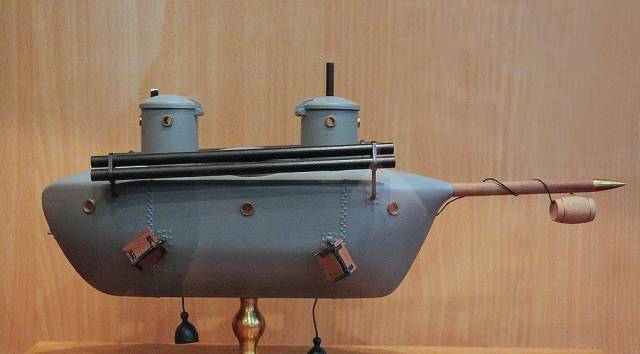
Karl Schilder's submarine model
Image source: © TSKB MT "Rubin"
The next step in the development of Russian underwater shipbuilding was the 350-ton boat of Ivan Fedorovich Alexandrovsky. She could not only dive, but also move underwater for quite a long time, using piston pneumatic machines fed with compressed air from 200 cast-iron cylinders.
Stepan Karlovich Dzhevetsky is considered to be the first designer of serial submarines. The head-mounted manned underwater vehicle of small displacement was built and tested during the Russian-Turkish War of 1877-1878.
The heir to the throne, the future Emperor Alexander III, according to his own diary, was present at the testing of the device. Perhaps his word proved decisive, and the treasury financed a series of 50 boats, completed in 1881. They were powered by a muscle drive, were armed with two mines and were intended to protect sea fortresses.
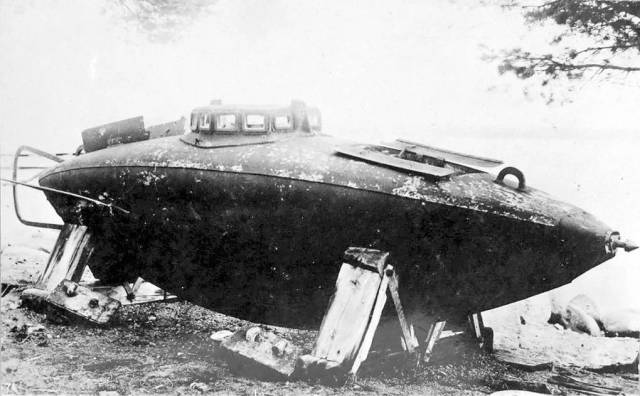
Stepan Dzhevetsky 's submarine
Image source: © TSKB MT "Rubin"
Against the background of the battleships of that time, such ships looked helpless and served only until 1886. And yet several of Dzhevetsky's boats were equipped with rowing electric motors. Stepan Karlovich also has another brilliant idea - an "optical navigation tube".
At the same time, at the turn of the XIX-XX centuries, there was still no theory of scuba diving, nor proper engineering and technical support. In practical activity, the first Russian submariners had to rely mainly on knowledge in the field of fundamental sciences and practical experience gained over the years of service on surface ships.
Destroyer No. 150
The fateful decision that determined the future of the Russian fleet and shipbuilding was the formation of the Commission for the Design of Underwater Vessels of the Maritime Department on December 19, 1900. It included the shipbuilder's senior assistant Ivan Bubnov, Senior mechanical engineer Ivan Goryunov and Lieutenant Mikhail Nikolaevich Beklemishev.
Soon after the formation of the commission, on December 22, 1900, notification letters were sent to Bubnov and other shipbuilders. This date is taken as the beginning of the history of the Central Design Bureau of Marine Technology "Rubin" - the oldest Russian submarine designer.
The Commission prepared the drawings of the "Destroyer No. 113". After the approval of the construction order (Baltic Plant), the ship was enlisted in the fleet as "Destroyer No. 150". Later he was given the name "Dolphin".
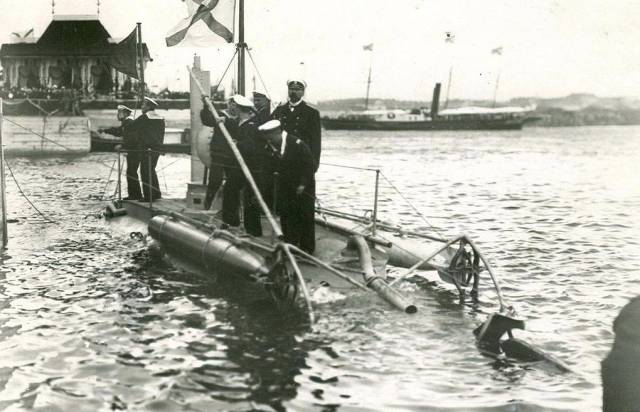
Launching of the submarine "Dolphin", 1903
Image Source: © Public Domain/Wikimedia Commons
In June - October 1903, the ship was tested in the Baltic waters, and in winter construction began on a series of "Russian-type" submarine destroyers of six units. They were called "killer whales" by the proper name of one of the ships.
The Russian-Japanese war broke out on January 27, 1904 (here and further - according to the old style). The Tsarist government was looking for ways to strengthen the naval grouping in the Far East, allocating additional funding for advanced weapons systems.
German electric boat
An order was placed in Germany for three Carp-type submarines. Out of gratitude, the Krupp company (which by that time could not sell anything like this to the Kaiser's fleet) presented Russia with the Forelle electric ship.
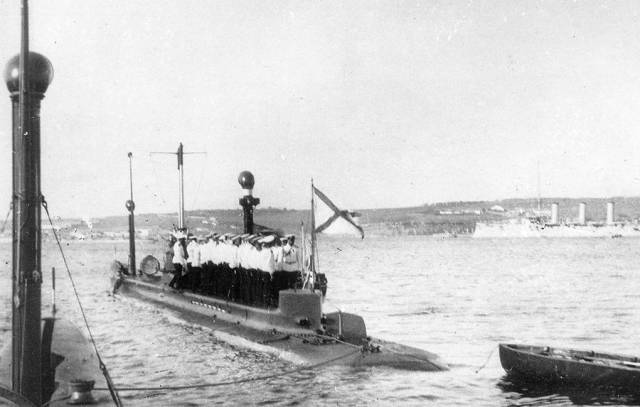
The submarine "Carp", 1906-1914
Image Source: © Public Domain/Wikimedia Commons
Afloat and underwater, the 18-ton boat with two external tubes for torpedoes demonstrated good handling. There was no internal combustion engine on board - both underwater and surface running was provided by an electric motor with a capacity of 50 hp, and battery charging was in the base. The battery capacity was enough to travel 20 miles at a speed of 4 knots.
In the specific situation of 1904, "Trout" had another important advantage. A submarine of small dimensions and weight could be transported relatively easily by rail. After a short stay in the Baltic, on August 11, the boat, together with a crew of six people, set off on rails to the Far East. For almost half a year, the Trout remained the only formally operating submarine in Vladivostok.
Order from America
Russia acquired one finished boat each from Lake Submarine Company and Electric Boat Company. They were delivered to the Baltic in the summer of 1904.
The first - Protector built in 1902 by designer Simon Lake (Simon Lake), was named "Sturgeon". The second - Fulton designed by John Holland (John P. Holland), built in 1901, was renamed "Catfish". The ship underwent sea trials in September - October 1904 with the participation of the American delivery team, which also trained the Russian naval crew to control the ship and maintain its mechanisms. The boat was well steered, had tolerable seaworthiness and relatively high accuracy of firing torpedoes.
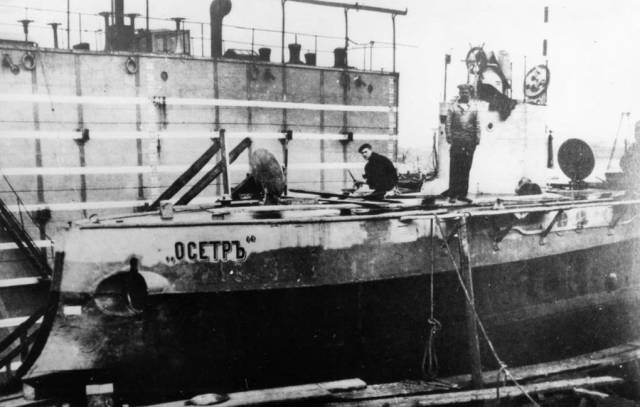
Submarine "Sturgeon", 1904-1905
Image source: © Public domain/wikipedia
"Dolphin", "Catfish" and "Sturgeon" were small in size: the length of the hull did not reach 20 m, the displacement of the first two was less than 150 tons, the third - up to 175. The speed of the surface course did not exceed ten knots, underwater - even less.
"Sturgeon" served the Russian Navy for only nine years (withdrawn from combat in the summer of 1913), "Catfish" died in May 1916, and "Dolphin" remained in service until August 1917.
First experience of action
To participate in the Russian-Japanese War during November 1904, five submarines of Bubnov's design ("Killer Whale", "Scat", "Burbot", "Field Marshal Count Sheremetev", "Dolphin") and one American ("Catfish") went to Vladivostok. History has not yet known such transportation of submarines at a range of about 9 thousand km.
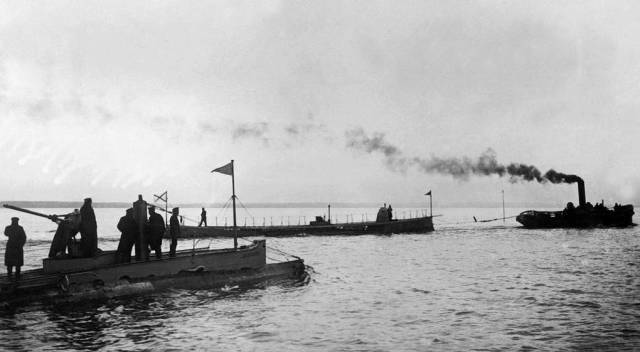
Submarines "Dolphin" and "Killer Whale", 1905-1917
Image Source: © Public Domain/Wikimedia Commons
Port Arthur fell on December 20, 1904. By that time, seven submarines had been delivered from the Baltic to the Far East and a "Separate detachment of destroyers of the Vladivostok port" had been created. The commander of the "Killer Whale" Alexander Plotto was in charge of the detachment. He can be considered the world's first commander of a tactical submarine formation in the theater of operations.
The submariners performed their first joint trip on February 16-19. At the same time, only the "Dolphin" was armed - torpedoes of the 1898 model suitable for the devices of the Dzhevetsky were found in the stocks of the Vladivostok port.
Disadvantages found
Gasoline internal combustion engines (ICE) of that time could not withstand prolonged loads. For example, the killer whales were equipped with two Panar motors. This gave the crews the opportunity to use them alternately, changing every couple of hours. The practical range of navigation under the most favorable circumstances was 1.5 thousand miles.
However, due to the unreliability of the engines and the low seaworthiness of the submarines, the commanders tried not to leave the port at a distance of more than 100-120 miles. At the same time, they sought to keep a reserve of battery capacity for eight hours of the smallest underwater course.
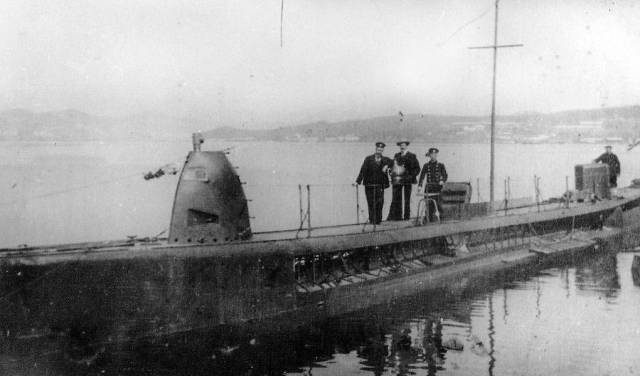
Submarine "Killer Whale", 1904-1917
Image Source: © Public Domain/Wikimedia Commons
The boats of the "Killer Whale" type had an electric motor with a capacity of 100 hp when running on the surface. It was powered by two dynamos (electric generators) powered by an internal combustion engine. During the service, it turns out that when swimming in a positional position in fresh weather, sea water gets inside the hull. We had to batten down the hatches, and conduct surveillance through portholes with limited viewing angles.
Diving from a cruising position under the periscope took at least five to six minutes, and in some cases it was delayed up to ten or more. Russian boats could become easy prey for Japanese surface ships, especially high-speed cruisers and destroyers. During one of the trips on the Killer Whale, they mistook the island for an enemy ship and conducted an urgent dive, which took seven minutes. Maneuvering was found unsatisfactory: during such a time, the destroyer could well sink the boat with a ramming blow.
Even if it was possible to dive in time, it would not be easy to take a convenient position for a torpedo attack on a mobile target. The "killer whales" were poorly controlled while underwater. And the "Dolphin" had heavy steering, which placed increased demands on the skill of the crew.
After Tsushima
The battle of the battleships off Tsushima Island on May 14-15, 1905 ended with the destruction of the Second Pacific Squadron. Russia has kept only the cruisers of the commander of the Vladivostok detachment, Rear Admiral Jessen, and a "separate detachment of destroyers" in combat-ready condition in the theater of military operations.
Over time, the detachment became quite numerous. The first submarine of the Lake design arrived on rails in the Far East back in April. Gradually, the number of the detachment increased to 13 submarines. Half of the boats were under repair, which was carried out, as a rule, by the crews.
"Boats are one of the strongest means of coastal defense. With the ability to use them, submarines can cause terrible harm to the enemy in his own ports and cause moral fear and commotion by their appearance there," noted Rear Admiral Vladimir Trubetskoy, commander of the Soma.
The war ended on August 23, 1905 with the signing of a peace treaty.
Understanding the experience
Four of the 13 submarines of the "separate detachment" reached Vladivostok after the end of the war. Due to the late delivery of the "Sturgeon" type submarines, they did not have time to take part in the fighting.
A common drawback of all submarines of those years is the unreliable operation of internal combustion engines. The excitement of the sea, a strong swell rocked the boats in a surface position so that the electrolyte splashed out. Internal explosions took place several times during the war. The death of the sailor was caused by an incident on the "Dolphin", the cause of which was the ignition of gasoline vapors.
Poor habitability conditions created constant discomfort, reducing the efficiency of the crew. Since the boats were structurally unsound, and the ventilation system was inefficient, a mixture of gasoline vapors, oil burning and exhaust was constantly kept inside the ship. Add to this the increased humidity and the crew's lack of opportunity to dry their clothes after the watch. There were no overalls for working inside the boat. Only the team of "Soma" was lucky: it was equipped with waterproof clothes on squirrel fur.
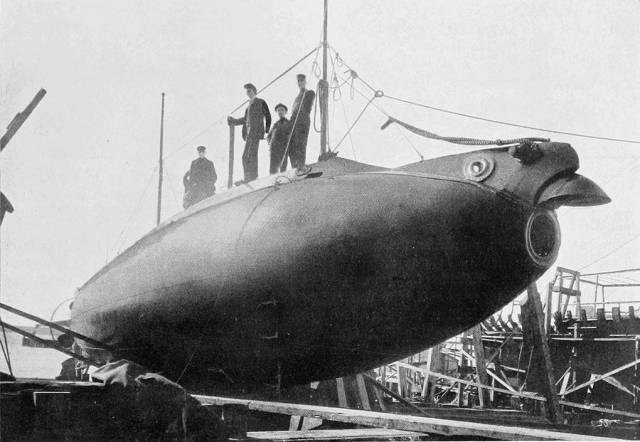
Submarine "Catfish", 1902
Image Source: © Public Domain/Wikimedia Commons
The boats built according to the designs of American engineers Holland and Lake, and the boats developed by Bubnov turned out to be comparable in general technical level, seaworthiness and combat qualities.
Domestic submarines differed from the "foreigners" by high speed and range of navigation. They also had stronger weapons. However, Dzhevetsky's torpedo tubes did not work in the cold, which limited the combat value of the killer whales in winter. In addition, the torpedoes in the devices of Dzhevetsky were in the water all the time of the campaign, and in order to remain ready to fire, they had to be lubricated often.
Training attacks
On the afternoon of September 22, 1906, the submarine "Mullet" conditionally sank the cruiser "Pearl" at anchor in Novik Bay. Being in the Amur Bay, the Mullet took a favorable position for the attack and imitated a shot from the bow from a range of 3-3.5 cable (about 600 meters). The observers on the cruiser did not notice the periscope of the attacking submarine.
Continuing the training attack, the boat shortened the distance by another 400-500 m, surfaced under the periscope and imitated a shot from the second bow. Then, having performed a maneuver in depth and course, she turned around and "fired" at the cruiser from the aft apparatus. The submariners made an exit from the bay, maintaining a diving depth of 7-8 m. Since the periscope was found on the cruiser only before the "second torpedo shot", the attack was recognized as successful.
The submariners also worked out actions in case of a night attack. Having entered the bay unnoticed and continuing to move in a low-speed surface position, the Mullet approached the Pearl cruiser at an extremely short torpedo firing distance. And in the submerged position, the cruiser's observers could not distinguish the submarine even close up, when it was running low under the periscope.
Confession
Discussing the future of a new type of naval weapon, the commanders of Pacific submarines considered it advisable to build large submarines with a displacement of over 500-600 tons (that is, 4-5 times larger than those that formed the basis of a "separate detachment").
Recognition of the growing role of submariners can be considered the decree "On the classification of military vessels of the Russian Imperial Fleet", dated March 6, 1906 (according to the new style - March 19).
Emperor Nicholas II deigned to include "messenger ships" and "submarines" in the classification. The text of the decree lists 20 names of submarines built by that time, including the German "Trout" and several under construction.
The submarines of the Russian-Japanese War did not become a formidable fighting force, but served the cause of training submariners and the beginning of systematic work to develop tactics for a new type of naval weapons. The fighting gave a strong impetus to the development of underwater technology in Russia.
Vladimir Karnozov
